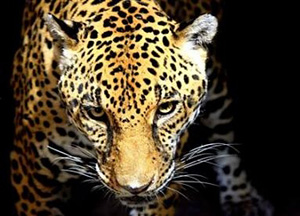 |
 |
 |
 Editorials | Environmental | September 2006 Editorials | Environmental | September 2006  
US-Mexico Border Fence May Harm Animal Migration
 Tim Gaynor - Reuters Tim Gaynor - Reuters


| | The planned barrier would also sever the rugged highland trails used by "pioneer" jaguars currently crossing from Mexico and repopulating the rugged Peloncillo mountains east of Douglas after decades of absence. (Juan Carlos Ulate/Reuters) |
A plan to fence off a third of the U.S. border to stop illegal immigration from Mexico may harm migration routes used by animals including rare birds and jaguars, environmentalists and U.S. authorities warn.

The House of Representatives passed a bill this month authorizing the construction of about 700 miles (1,120km) of double fencing along the 2,000-mile (3,200-km) border, which was crossed by more than one million illegal immigrants last year.

The proposal, which the Senate is expected to vote on in coming days, seeks to build continuous barriers separated by an access road for patrol vehicles on long stretches of the border in California, Arizona, New Mexico and Texas.

Environmentalists and U.S. Fish and Wildlife Service wardens say the barrier would disrupt the migration of scores of species from jaguars to hawks and humming birds along a wildlife corridor linking northern Mexico and the U.S. southwest known as the "Sky Islands."

The chain of 40 mountain ranges links the northern range of tropical species such as the jaguar and the parrot in the Mexican Sierra Madre Mountains, and the southern limit of temperate animals such as the black bear and the Mexican wolf in the U.S. Rocky Mountains.

"Bisecting the area with an impermeable barrier such as a double reinforced wall or fence could really have a devastating effect on these species," said Matt Skroch, a wildlife biologist and executive director of the environmental non-profit group Sky Island Alliance in Tucson, Arizona.

"If they build it, we could really say goodbye to the future of jaguars in the United States," he added.

PIONEERS CROSSING NORTH

The proposal under consideration by Congress would replace a patchy, chest-high barbed wire fence that cuts across the wilderness areas of the southwest with large sweeps of continuous double barrier fencing topped with bright lights.

U.S. Fish and Wildlife Service wardens in Arizona say the planned barrier would impact the fragile desert ecosystem, and could also harm migratory birds such as Gray and Swainson hawks and Rufous hummingbirds that soar over it.

"The fence would have a negative effect on everything from the insects that would now be flying around the lights instead of pollinating the cactuses, to the birds that eat them, right up to the large predators like the jaguars," said William Radke, the manager of the San Bernardino National Wildlife Refuge, east of Douglas, Arizona.

Radke said the fence would prevent snakes and turtles, as well as wild turkeys and road runners from crossing. In addition, the bright lights at the top of the tall fence would interfere with birds' ability to navigate by the stars.

"A lot of migratory birds actually migrate at night, using stellar navigation and the moon to navigate. Suddenly lighting them up may disrupt a bird's ability to feed and rest and it may impact its survivability later on," he added.

Radke said the planned barrier would also sever the rugged highland trails used by "pioneer" jaguars currently crossing from Mexico and repopulating the rugged Peloncillo mountains east of Douglas after decades of absence.

The spotted cats originally roamed the Americas from Argentina in the south, to the Grand Canyon, in northern Arizona, but vanished from the United States several decades ago due to hunting and pressure from human encroachment on their habitat.

"The jaguars and a lot of the other wildlife that pioneer north from Mexico are coming here because their habitats are filling up down there," Radke said.

"If we cut off that access they are going to be restricted to areas where they are going to be in conflict with their own populations, it would have a negative impact," he added. | 
 | |
 |



